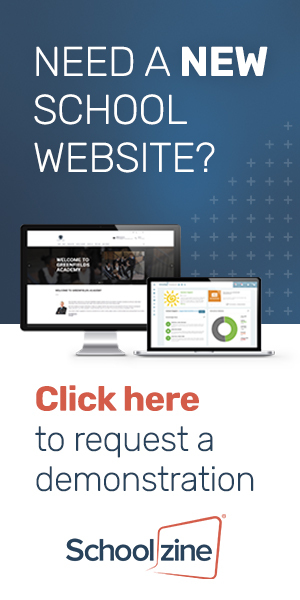Five ways to create an engaging digital school newsletter
The vast majority of schools will distribute some form of newsletter to their parent community. Now, more than ever (and especially since the pandemic hit) this newsletter is quite probably ‘digital.’
Sending regular newsletters are important for obvious reasons; they inform parents of significant dates, news and events, they promote the great things that are happening in school, and crucially, they should celebrate student successes.
All these things should be included in a good school newsletter, in order to improve parent engagement. It is a widely known fact that if a parent is engaged in their child’s life in school, it contributes towards a better educational outcome for that student.
Here are five ways to create a more engaging school newsletter.
1. Segment your parent community
Segment your parent community into different ‘types’ of parents, and ensure your newsletter content connects with each of these segments adequately. Some examples of parent types might be: SEN parents, already engaged parents, time-starved parents, EAL parents.
Let’s just look at each of these in turn.
- SEN parents - These parents have a unique set of needs. Their child may not be able to communicate about their day in school, so your newsletter should help to service this need. Including media rich content (like photos and videos) that showcases what’s happening in the classroom will help to keep these parents involved.
- Already engaged parents - Often actively involved with the school through the PTA, these parents are already reading your newsletter, so you need to find ways of connecting with them on a deeper level. Consider making your newsletter interactive with spot-polls and surveys and seeking help with future events. Don’t forget that this segment can become advocates of the school, so it’s important to keep their appetite satisfied.
- Time-starved parents - Many of your parents may work full-time, be a single parent, or have several children. These people need relevant information, fast. They will want to receive newsletters in a mobile-friendly, easy to digest format. They want concise content, but also interesting news that relates specifically to their child.
- EAL parents - These parents frequently find the ever-increasing amount of school information overwhelming. Two things help you engage with these parents much more easily - news that doesn’t use a text-heavy format (so break it up with images and video), and Google Translate capability. To be able to understand school content at the touch of a button is a godsend for these parents, they feel valued and included.
2. Celebrate student success
Whilst it’s important to communicate important dates, news and events, this must be balanced well with student-centric information.
Achieve this by celebrating successes of individuals and groups of students. There are many ways to go about this - include an article on class of the week, a headteacher’s award, or attendance stars.
Alongside this, also be sure to include student-generated content. For example, a poem written by a pupil, a netball match report, a video of a child’s performance, or a photo gallery of inspiring artwork.
Make class teachers accountable for relevant grass-roots content, setting a requirement for at least one article for each newsletter.
3. Consider the ‘how’ and ‘when’
School communications in 2021 are unrecognisable to those of ten years ago, and parents’ expectations of a ‘digital’ newsletter has moved on a lot, too. The prevalence of sophisticated social media feeds like Facebook, Twitter and Instagram means they now expect much more than a simple PDF attachment to an email.
If such a mobile friendly, media-rich, interactive newsletter is favoured by parents, is easier and quicker to create, and increased the level of engagement within your school community, then why wouldn’t you do it that way?
Also consider when and how often you produce and send your newsletter. If you use an eNewsletter builder, you cut out all the painstaking collating and formatting of information involved in creating an engaging school newsletter. This means you can produce newsletters more often, should you wish to.
4. Make the information relevant and integrated
Although parents don’t want lengthy newsletters, they do want all the required information about a given topic (a school trip, for example).
So how do you avoid newsletters that contain war and peace (one with a load of information that isn’t relevant to a large chunk of your community), and targets the right information to the right parents?
There are two methods here. Firstly, consider a platform that allows an indexed newsletter, one with a contents table at the top, with each section being clickable. Presto! That year six parent can now navigate straight to the year six section.
Secondly, adopt an integrated approach. This involves an integrated solution between your newsletter and other communications platforms. For example, if you have an online calendar, include a link to this in your newsletter, either in its entirety or for individual events. If you have an upcoming parents’ evening with online bookings, reference this in your newsletter and simply link to this.
5. Make sure your latest newsletter is permanently available
People want information instantly these days. As well as pushing your newsletter out via email and/or app notification, it’s also a good idea to have it permanently available somewhere.
Why? So when that busy parent has finished work, sorted the kids’ tea, put them to bed and sat down, they don’t have to sift through dozens of emails in the week to retrieve it. Can you have it accessible on your website, a parent portal, or even better, the home page of an app?
If you’d like to talk to us about our mobile friendly newsletter solutions, please get in touch.


